Welcome to our Dyson Omni-glide cordless vacuum review. The Omni’s airflow was measured at 24 CFM, and its suction was measured at 67 in of water lift. This is substantially less airflow and suction than that of any other Dyson cordless vacuum we’ve tested.
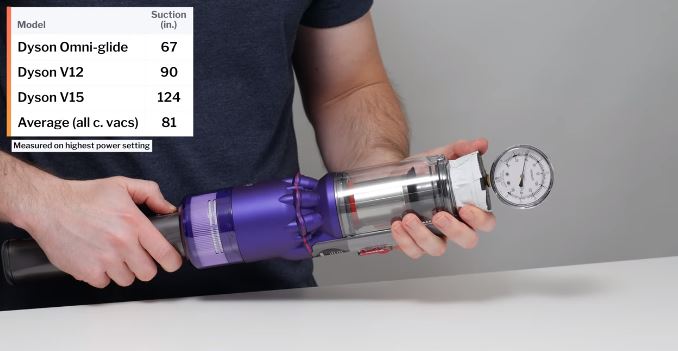
Dyson Omni-glide tests
Flour clog test

The Omni was also the only Dyson to fail our flour clog test. It picks up the flour without issue, but much of the flour it picks up deposits on its pre-motor filter. It’s unclear exactly why it failed this test. It does have fewer cyclones than other Dyson models, and it also has the smallest bin of any Dyson, but the V12 Detect with only slightly more cyclones and only a slightly larger bin performed perfectly in the same test.
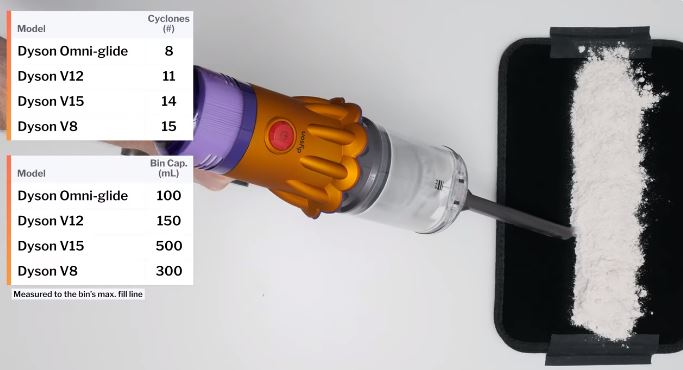
Almost none of the flour the V12 picked up deposited on its pre-motor filter. In any case, the Omni’s performance in this test indicates that its filter clogs up very easily with fine debris. This results in a quicker loss in suction and more required filter maintenance than other Dyson models we’ve tested.
Cleaner head design
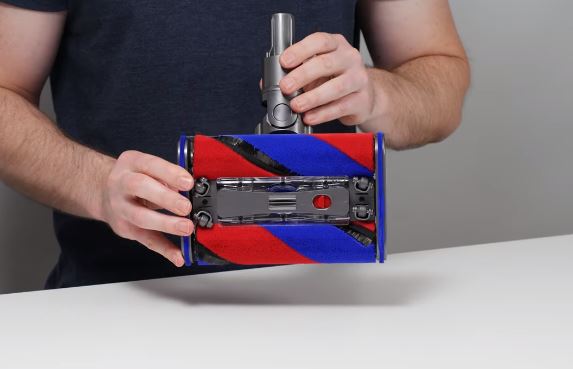
When it comes to surface-level debris pickup, cleaner head design is, of course, a critical factor. The Omni Glide has a very unique cleaner head that’s composed of two soft roller brush rolls that are optimized for hard floor cleaning.
Carpet cleaning
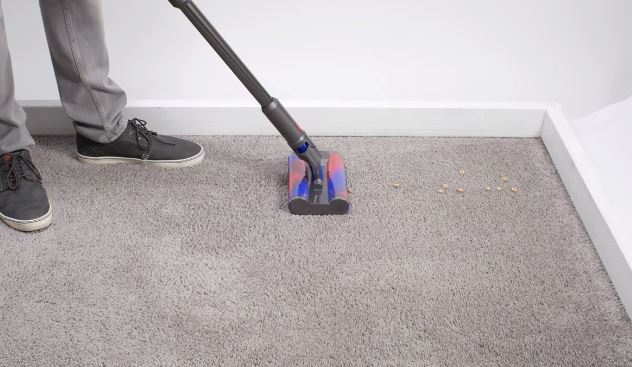
Nevertheless, we still tested if the vacuum would work at all on carpet, and it did. It’s not recommended for picking up fine debris on carpet, but as this test shows, the Omni can hold its own picking up large debris like Cheerios even on carpet.
Hard floor cleaning
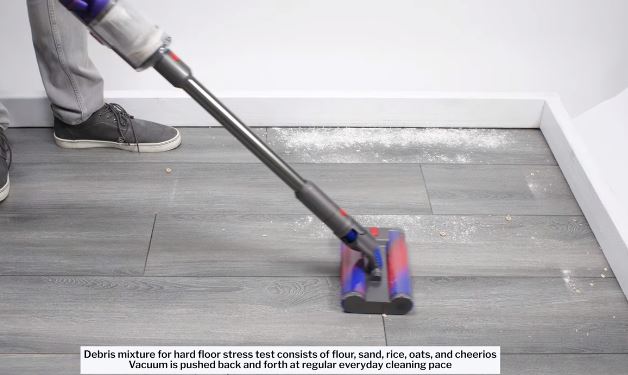
In our hard floor stress test, the Dyson Omni-glide picked up debris equally well pushed forward or pulled backward because of its dual roller design, as is demonstrated here.
Crevice test
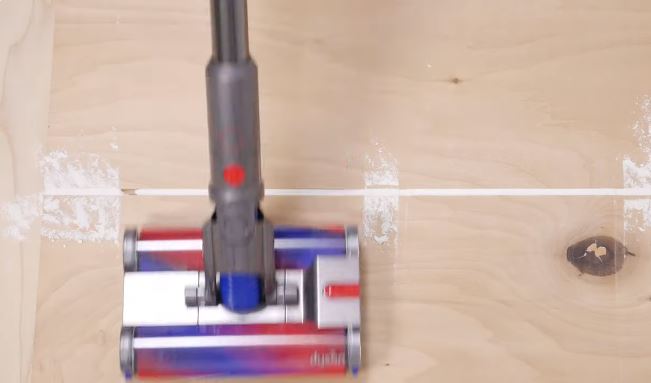
However, this vacuum did not perform well in our hard floor crevice test; it couldn’t pull most of the flour out of the crevice even after over 20 back-and-forth passes. Most other Dyson cordless vacuums can pick up all of the flour in under 10 passes.
Battery life
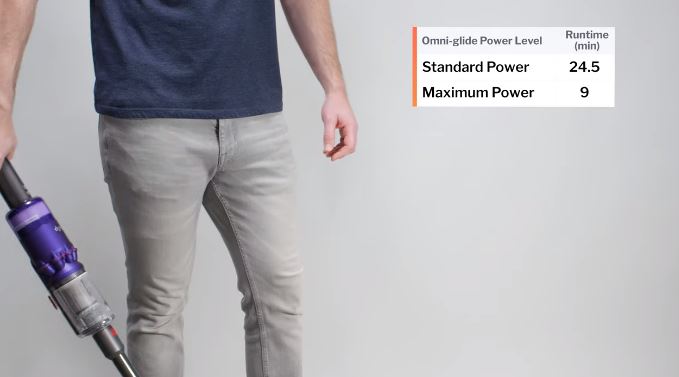
The Omni-glide was tested to run for 24 and 1/2 minutes on standard power and 9 minutes on maximum power. Most users are likely to just use the vacuum on standard power as it still gets good performance with much better battery life on standard power.
Fog test
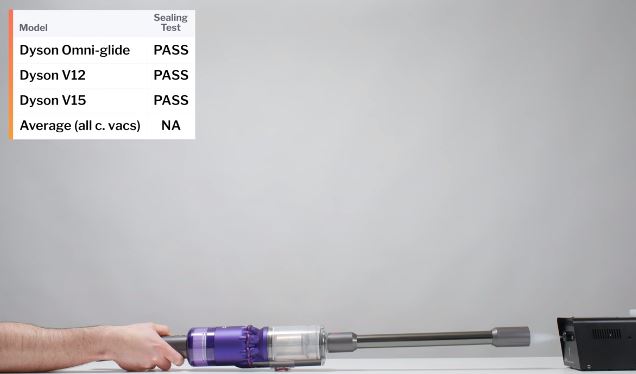
Like all other Dyson cordless vacuums, the Omni-glide passed our debris containment test. It had no trouble properly sealing in the fog used for this test.
Hair tangling
We also tested to what extent the Omni-glide would tangle with long hair. In our tests, it tangled with 40 to 45% of 8-inch long hair and 70% of 14-inch long hair.
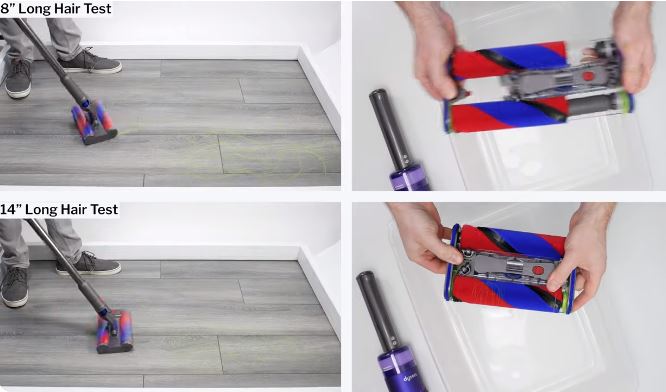
As you can see here, some of the hair tangled along this edge of the cleaner head, and a good bit of it tangled around this side of the cleaner head. Either way, the Omni-glide definitely tangles a lot more easily with long hair than other Dyson models we’ve tested. It also tangles more easily with long hair than most other cordless vacuums we’ve tested.
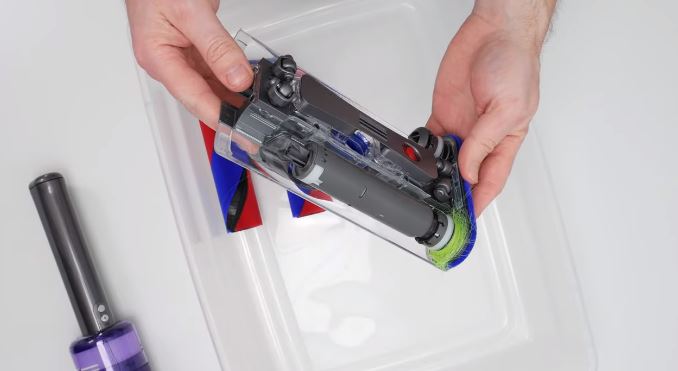
Weight & handling
In general, moving on to ease of use, the Omni-glide is very light. Its main body is light, and its cleaner head is light. This makes it very easy to handle and maneuver around furniture.
On/off button
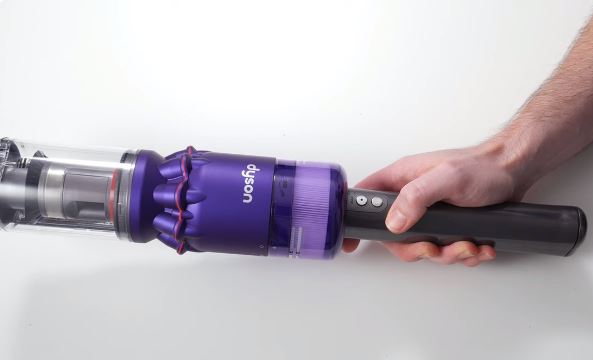
It’s also easy to control; it has an on/off button. Pressing it at once powers the vacuum on and keeps it on. It also has a separate button for alternating between standard and maximum suction.
Dust bin size
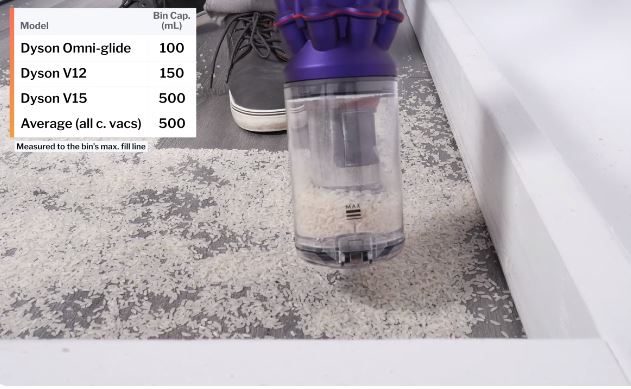
On the negative side of things, the vacuum does have a very small dust bin. We measured it to have a maximum capacity of only 100 ml. The average cordless vacuum dust bin has a maximum capacity of around 500 mL.
Pros and cons
Summarizing all of the pros and cons for this vacuum, we do like the very unique design of the Omni-glide. We like that it’s a vacuum that’s uniquely made for cleaning hard floors. The Omni-glide performed very well picking up surface-level debris in our hard floor stress test. We also like that it can clean equally well being pushed forward and pulled backward. The vacuum is also very lightweight and easy to push forward and pull backward.
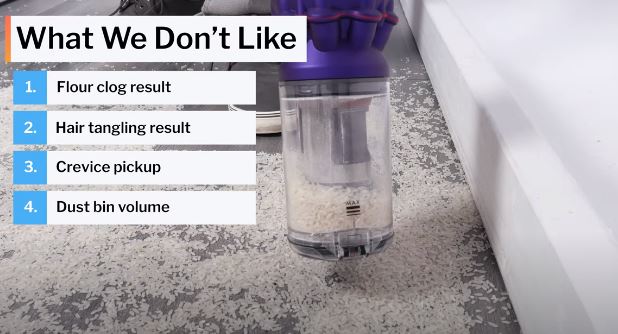
On the negative side of things, we were very disappointed in the vacuum’s performance in our flour clog test and in our hair tangling tests. The vacuum also performed poorly in our hard floor crevice test, and it has a very small dust bin.
>>>Dyson V15 Detect Cordless Vacuum: All tests
Recommendations
Moving on to general recommendations, the Omni-glide is generally not recommended because of its performance in our flour clog test. Its performance in this test indicates that it will lose suction quickly as its filter clogs up with fine debris. It also indicates that it will require extensive filter maintenance over time.
Dyson Omni-glide vs V8
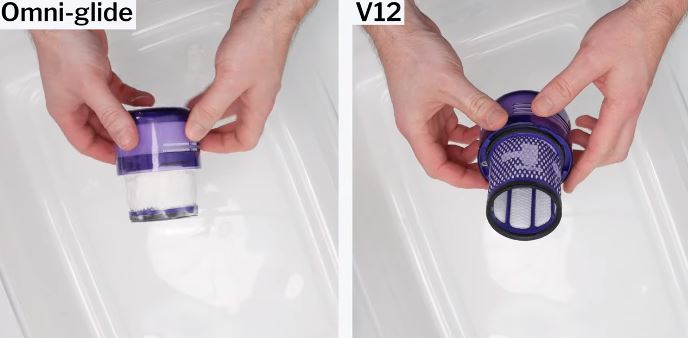
If you’re looking to buy a cheaper Dyson for hard floor cleaning, we recommend the Dyson V8 instead. The V8 passed our flour clog test, tangles much less easily with longer hair, performed much better in our hard floor crevice test, and has a much larger dust bin. You can buy a soft roller cleaner head for the V8 for excellent performance on hard floors. Thank you for reading our Dyson Omni-glide review article